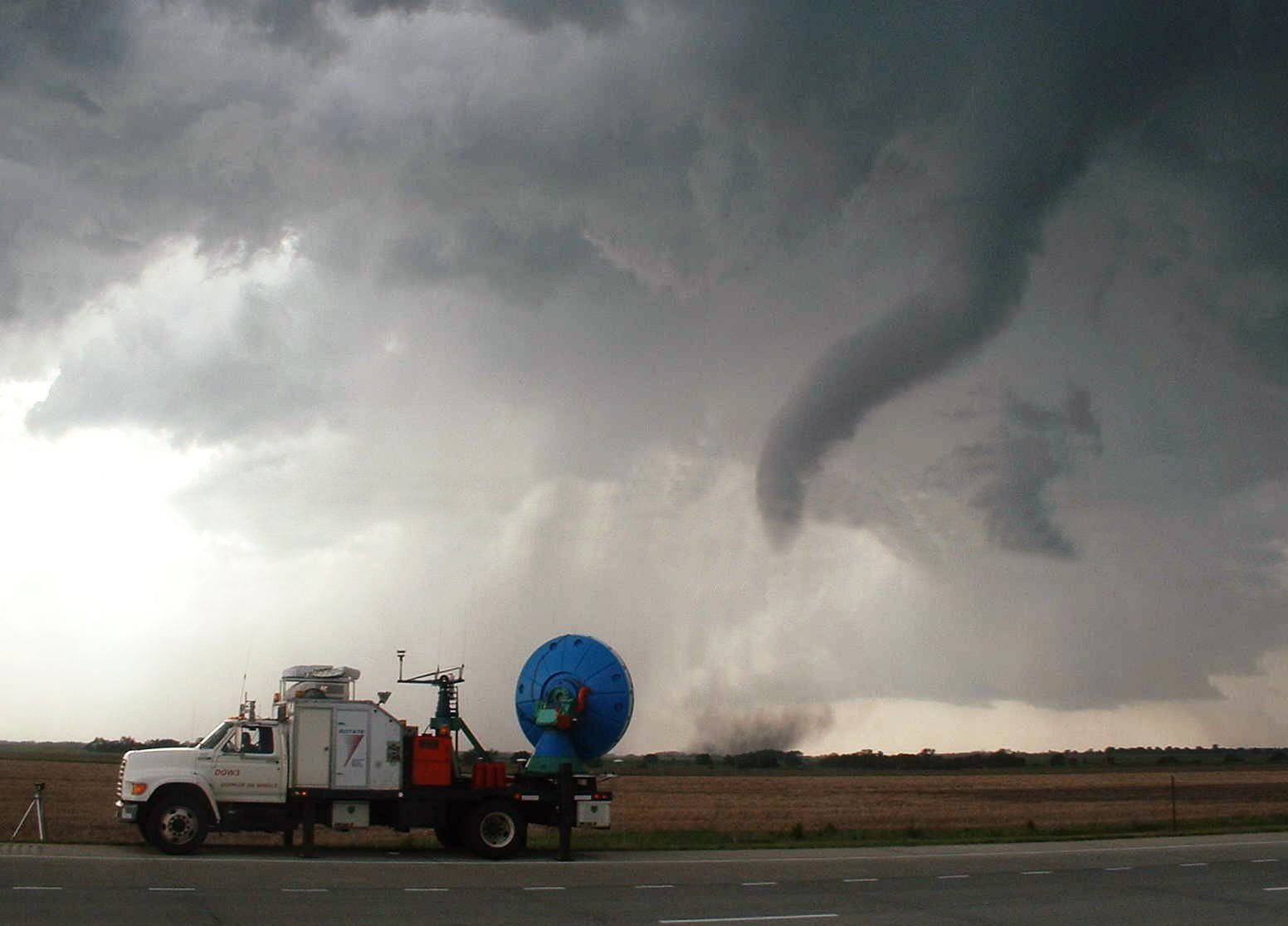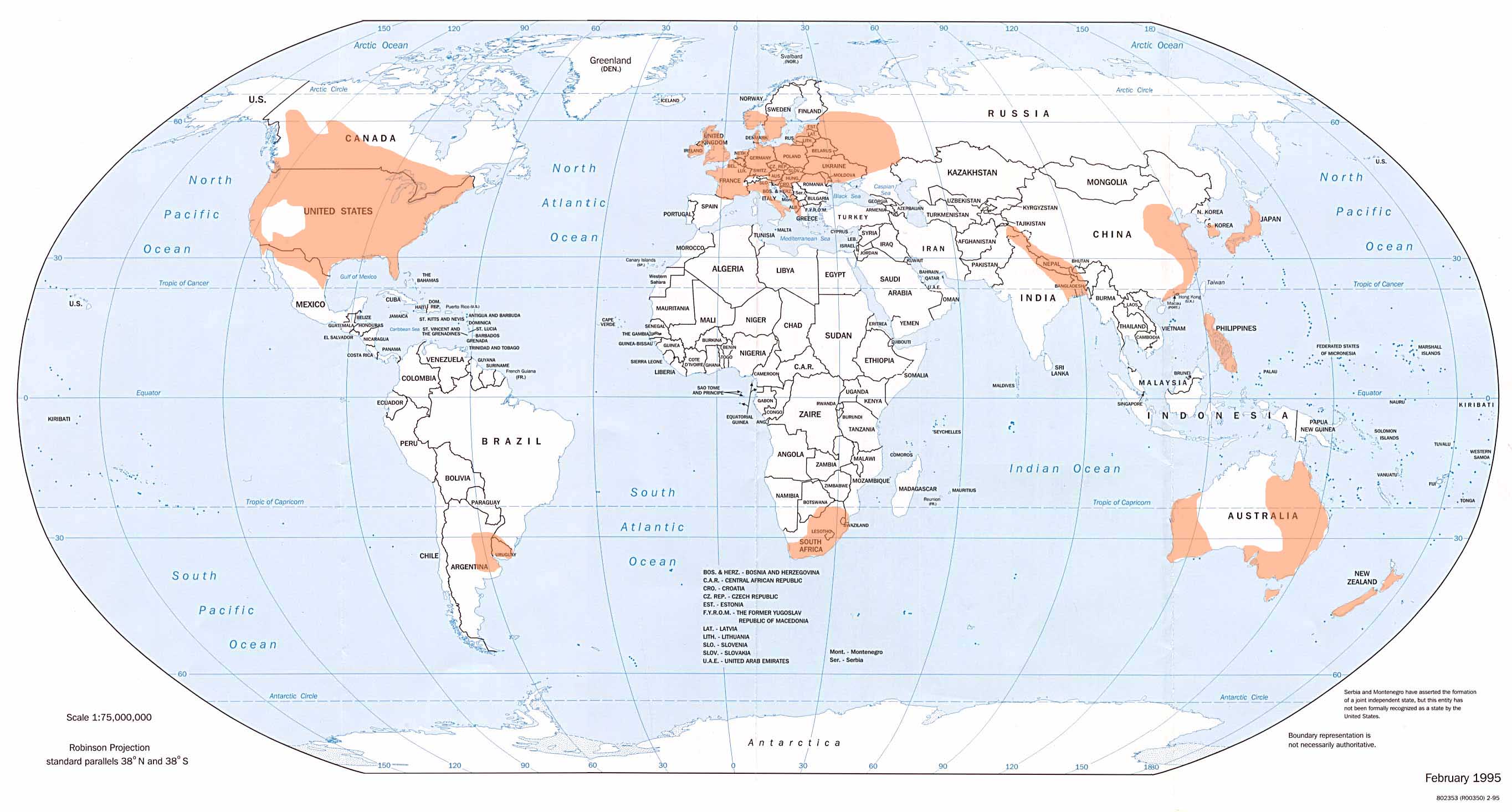|
Joshua Wurman
Joshua Michael Aaron Ryder Wurman (born October 1, 1960) is an American atmospheric scientist and inventor noted for tornado, tropical cyclone, and weather radar research. Life and career Education Joshua Wurman's father is noted architect and founder of the TED conferences, Richard Saul Wurman. He attended Radnor High School in suburban Philadelphia. He earned a S.B. in physics and interdisciplinary science in 1982, a S.M. in meteorology in 1982, and a Sc.D. in meteorology in 1991, all from MIT. His masters thesis was The Long Range Dispersion of Radioactive Particulates' and his doctoral dissertation was Forcing Mechanisms of Thunderstorm Downdrafts'. He moved to Boulder, Colorado to work at the National Center for Atmospheric Research (NCAR) and later to Norman, Oklahoma where he was a tenured faculty member at the University of Oklahoma (OU). He founded the Center for Severe Weather Research (CSWR) in 1998, which operates the Doppler On Wheels (DOW) radars. Wurman returned ... [...More Info...] [...Related Items...] OR: [Wikipedia] [Google] [Baidu] |
Norman, Oklahoma
Norman () is the third-largest city in the U.S. state of Oklahoma, with a population of 128,097 as of 2021. It is the largest city and the county seat of Cleveland County, and the second-largest city in the Oklahoma City metropolitan area, behind the state capital, Oklahoma City. It is 20 miles (32 kilometers) south of OKC. Norman was settled during the Land Run of 1889, which opened the former Unassigned Lands of Indian Territory to American pioneer settlement. The city was named in honor of Abner Norman, the area's initial land surveyor, and was formally incorporated on , 1891. Norman has prominent higher education and related research industries, as it is home to the University of Oklahoma, the largest university in the state, with nearly 32,000 students. The university is well known for its sporting events by teams under the banner of the nickname "Sooners," with over 85,000 people routinely attending football games. The university is home to several museums, incl ... [...More Info...] [...Related Items...] OR: [Wikipedia] [Google] [Baidu] |
Journal Of Atmospheric And Oceanic Technology
The ''Journal of Atmospheric and Oceanic Technology'' is a scientific publication by the American Meteorological Society. The journal includes papers describing the instrumentation and methodology used in atmospheric and oceanic research including computational techniques, methods for data acquisition, processing, and interpretation, and information systems and algorithms. See also * List of scientific journals ** List of scientific journals in earth and atmospheric sciences A ''list'' is any set of items in a row. List or lists may also refer to: People * List (surname) Organizations * List College, an undergraduate division of the Jewish Theological Seminary of America * SC Germania List, German rugby unio ... External links AMS publication site Oceanography journals English-language journals Publications established in 1984 Monthly journals American Meteorological Society academic journals Meteorology journals {{climate-journal-stub ... [...More Info...] [...Related Items...] OR: [Wikipedia] [Google] [Baidu] |
Monthly Weather Review
The ''Monthly Weather Review'' is a peer-reviewed scientific journal published by the American Meteorological Society. It covers research related to analysis and prediction of observed and modeled circulations of the atmosphere, including technique development, data assimilation, model validation, and relevant case studies. This includes papers on numerical techniques and data assimilation techniques that apply to the atmosphere and/or ocean environment. The editor-in-chief is David M. Schultz ( University of Manchester). History The journal was established in July 1872 by the United States Army Signal Corps. It was issued by the Office of the Chief Signal Officer from 1872 until 1891. In 1891, the Signal Office's meteorological responsibilities were transferred to the Weather Bureau under the United States Department of Agriculture. The Weather Bureau published the journal until 1970 when the Bureau became part of the newly formed National Oceanic and Atmospheric Administr ... [...More Info...] [...Related Items...] OR: [Wikipedia] [Google] [Baidu] |
Journal Of The Atmospheric Sciences
The ''Journal of the Atmospheric Sciences'' (until 1962 titled ''Journal of Meteorology'') is a scientific journal published by the American Meteorological Society. It covers basic research related to the physics, dynamics, and chemistry of the atmosphere of Earth and other planets, with emphasis on the quantitative and deductive aspects of the subject. See also * List of scientific journals in earth and atmospheric sciences A ''list'' is any set of items in a row. List or lists may also refer to: People * List (surname) Organizations * List College, an undergraduate division of the Jewish Theological Seminary of America * SC Germania List, German rugby union ... References External links * English-language journals Monthly journals Publications established in 1944 American Meteorological Society academic journals {{climate-journal-stub ... [...More Info...] [...Related Items...] OR: [Wikipedia] [Google] [Baidu] |
Science (journal)
''Science'', also widely referred to as ''Science Magazine'', is the peer-reviewed academic journal of the American Association for the Advancement of Science (AAAS) and one of the world's top academic journals. It was first published in 1880, is currently circulated weekly and has a subscriber base of around 130,000. Because institutional subscriptions and online access serve a larger audience, its estimated readership is over 400,000 people. ''Science'' is based in Washington, D.C., United States, with a second office in Cambridge, UK. Contents The major focus of the journal is publishing important original scientific research and research reviews, but ''Science'' also publishes science-related news, opinions on science policy and other matters of interest to scientists and others who are concerned with the wide implications of science and technology. Unlike most scientific journals, which focus on a specific field, ''Science'' and its rival '' Nature'' cover the ful ... [...More Info...] [...Related Items...] OR: [Wikipedia] [Google] [Baidu] |
OWLeS
The Ontario Winter Lake-effect Systems (OWLeS) was a field project focused on three modes of lake-effect snow: Short- fetch, long-fetch, and downstream coastal and orographic effects. The project was conducted along Lake Ontario in the Great Lakes region and in the Finger Lakes region of upstate New York. OWLeS occurred in two field phases, one in December 2013 and another in January 2014. The project is a collaborative effort of nine universities and the Center for Severe Weather Research and is funded by the National Science Foundation (NSF). Principal investigators * David Kristovich, Adjunct Associate Professor, Director of Atmospheric Sciences Group, University of Illinois at Urbana–Champaign *Bart Geerts, Associate Professor, University of Wyoming *Richard Clark, Dept. Chairman and Professor of Meteorology, Millersville University * Jeffrey Frame, Clinical Assistant Professor, University of Illinois at Urbana–Champaign *Neil Laird, Associate Professor of Atmospheri ... [...More Info...] [...Related Items...] OR: [Wikipedia] [Google] [Baidu] |
Lake-effect Snow
Lake-effect snow is produced during cooler atmospheric conditions when a cold air mass moves across long expanses of warmer lake water. The lower layer of air, heated up by the lake water, picks up water vapor from the lake and rises up through the colder air above. The vapor then freezes and is deposited on the leeward (downwind) shores. The same effect also occurs over bodies of saline water, when it is termed ocean-effect or bay-effect snow. The effect is enhanced when the moving air mass is uplifted by the orographic influence of higher elevations on the downwind shores. This uplifting can produce narrow but very intense bands of precipitation, which deposit at a rate of many inches of snow each hour, often resulting in a large amount of total snowfall. The areas affected by lake-effect snow are called snowbelts. These include areas east of the Great Lakes in North America, the west coasts of northern Japan, the Kamchatka Peninsula in Russia, and areas near the Great ... [...More Info...] [...Related Items...] OR: [Wikipedia] [Google] [Baidu] |
Tornado Records
This article lists various tornado records. The most "extreme" tornado in recorded history was the Tri-State Tornado, which spread through parts of Missouri, Illinois, and Indiana on March 18, 1925. It is considered an F5 on the Fujita Scale, even though tornadoes were not ranked on any scale at the time. It holds records for longest path length at , longest duration at about 3½ hours, and fastest forward speed for a significant tornado at anywhere on Earth. In addition, it is the deadliest single tornado in United States history with 695 fatalities. It was also the third most costly tornado in history at the time, but has been surpassed by several others non-normalized. When costs are normalized for wealth and inflation, it still ranks third today. The deadliest tornado in world history was the Daulatpur–Saturia tornado in Bangladesh on April 26, 1989, which killed approximately 1,300 people. In the history of Bangladesh at least 19 tornadoes killed more than 100 people each, ... [...More Info...] [...Related Items...] OR: [Wikipedia] [Google] [Baidu] |
VORTEX Projects
The Verification of the Origins of Rotation in Tornadoes Experiment (or VORTEX) are field experiments that study tornadoes. VORTEX1 was the first time scientists completely researched the entire evolution of a tornado with an array of instrumentation, enabling a greater understanding of the processes involved with tornadogenesis. A violent tornado near Union City, Oklahoma was documented in its entirety by chasers of the Tornado Intercept Project (TIP) in 1973. Their visual observations led to advancement in understanding of tornado structure and life cycles. VORTEX2 used enhanced technology that allowed scientists to improve forecasting capabilities and improve lead time on advanced warnings to residents. VORTEX2 sought to reveal how tornadoes form, how long they last and why they last that long, and what causes them to dissipate. VORTEX1 and VORTEX2 was based on the use of large fleets of instrumented vehicles that ran on land, as well as aircraft and mobile radars. Important w ... [...More Info...] [...Related Items...] OR: [Wikipedia] [Google] [Baidu] |
Tornado Climatology
Tornadoes have been recorded on all continents except Antarctica. They are most common in the middle latitudes where conditions are often favorable for convective storm development. The United States has the most tornadoes of any country, as well as the strongest and most violent tornadoes. A large portion of these tornadoes form in an area of the central United States popularly known as Tornado Alley. Canada experiences the second most tornadoes. Ontario and the prairie provinces see the highest frequency. Other areas of the world that have frequent tornadoes include significant portions of Europe, South Africa, Philippines, Bangladesh, parts of Argentina, Uruguay, and southern and southeastern Brazil, northern Mexico, New Zealand, and far eastern Asia. Tornado reports in the U.S. have been officially collated since 1950. These reports have been gathered by the National Climatic Data Center (NCDC), based in Asheville, North Carolina. A tornado can be reported more than once, ... [...More Info...] [...Related Items...] OR: [Wikipedia] [Google] [Baidu] |
Tornadogenesis
Tornadogenesis is the process by which a tornado forms. There are many types of tornadoes and these vary in methods of formation. Despite ongoing scientific study and high-profile research projects such as VORTEX, tornadogenesis is a volatile process and the intricacies of many of the mechanisms of tornado formation are still poorly understood. A tornado is a violently rotating column of air in contact with the surface and a cumuliform cloud base. Tornado formation is caused by the stretching and aggregating/merging of environmental and/or storm-induced vorticity that tightens it into an intense vortex. There are various ways this may come about and thus various forms and sub-forms of tornadoes. Although each tornado is unique, most kinds of tornadoes go through a life cycle of formation, maturation, and dissipation. The process by which a tornado dissipates or decays, occasionally conjured as tornadolysis, is of particular interest for study as is tornadogenesis, longevity, an ... [...More Info...] [...Related Items...] OR: [Wikipedia] [Google] [Baidu] |







